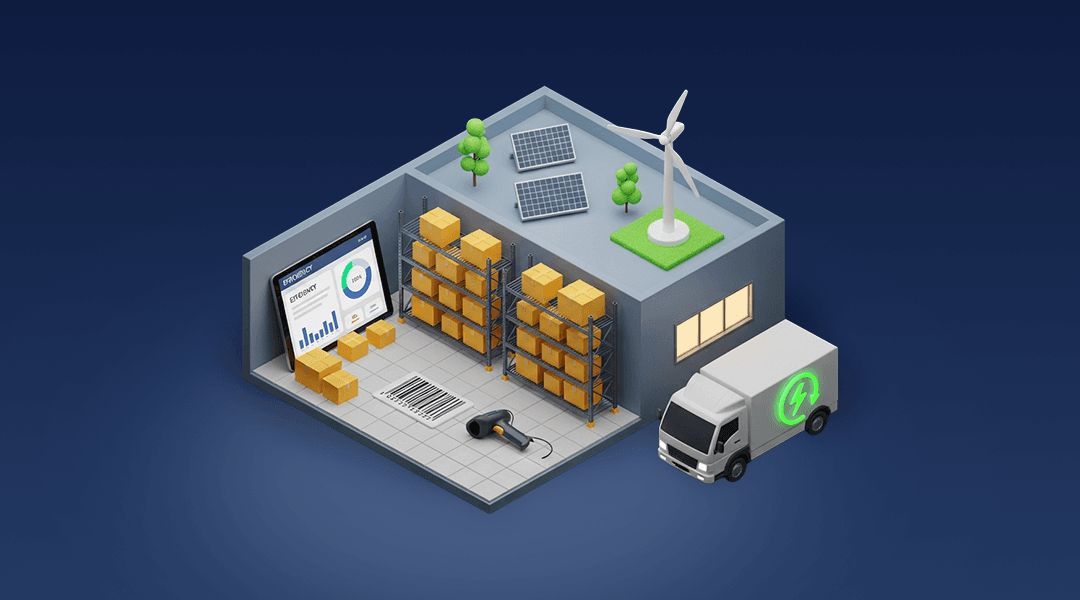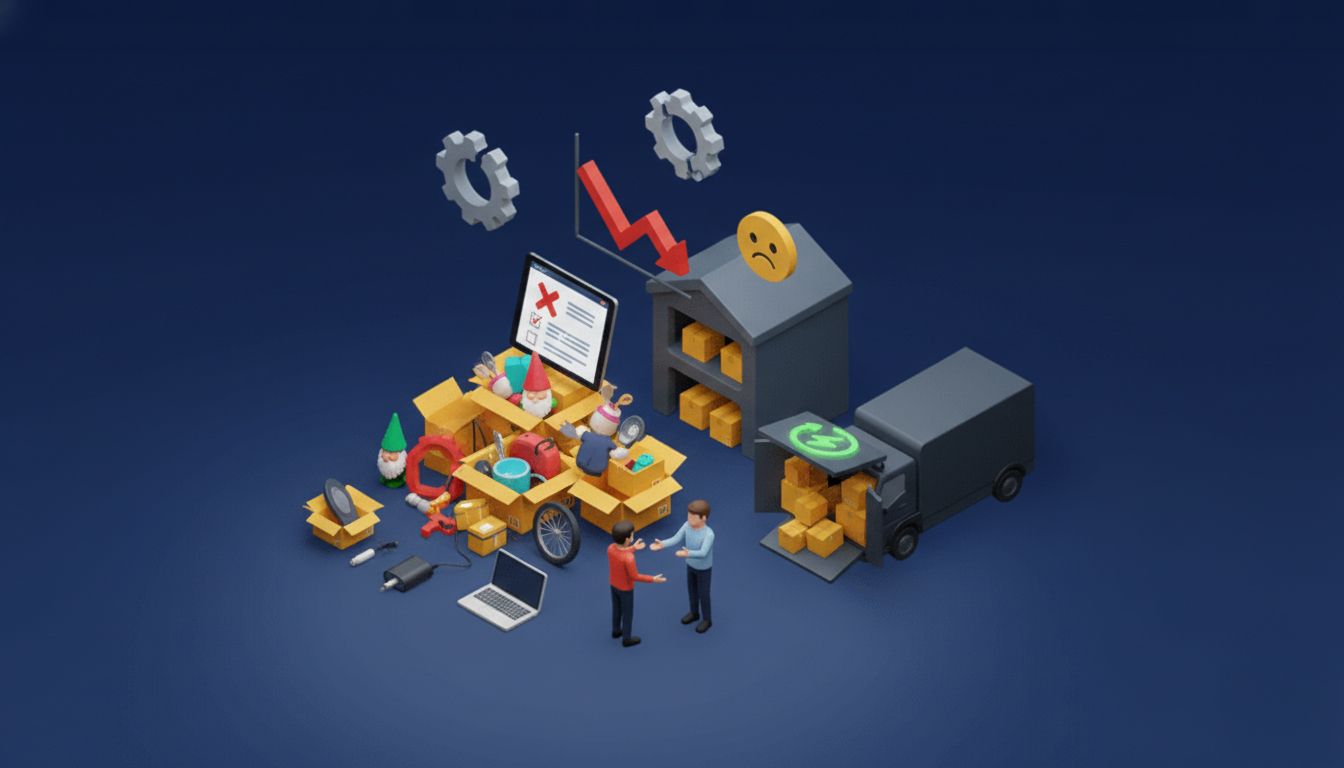WMS Cost: Understanding the Pricing of Warehouse Management Systems

Table of Contents
What is WMS Cost?
A Warehouse Management System or WMS cost includes the total amount that you would have to pay to install and support warehouse automation software. The price of the warehouse management system differs on business needs, deployment options, and scope. Specifically, companies with successful WMS increase productivity by up to 40% of labor, proving the superiority of WMS customization 99.9% of the time.
Importance of Understanding WMS Costs for Businesses
Identifying WMS costs is important to business as they directly impact operating budgets and profitability in the long run. Any full-service WMS platform has both upfront and ongoing costs such as deployment, licensing, training, and support to factor in. This investment is an investment that can dramatically improve warehouse efficiency and minimize operating costs if planned correctly.
There are several considerations that determine the final WMS cost — whether it’s cloud or on-premise, what features to choose, and how much scale. These factors set the prices for each entity into a maze, which the companies must cut through to find the best price for the company.
Factors That Influence WMS Costs
For enterprises, proper WMS cost/Warehouse management system costs are fundamental to budget and, ultimately, profit in the long term. Selecting a warehouse management system includes estimation of fixed and long-term costs like installation, licensing, training, and maintenance. This is an investment that, if well thought out, can produce huge gains in efficiency and savings.
Cloud-Based vs. On-Premise WMS
The key difference in WMS cost lies in deployment options, with cloud offerings allowing you to price more cost-effectively than traditional on-premises solutions. Although cloud WMS pricing is more of a subscription model, on-premise WMS is expensive in the beginning but might save you more money in the long run.
Features and Functionalities Affecting WMS Pricing
WMS cost is directly influenced by the capabilities chosen for a WMS: real-time tracking, automation, and integration features. Advanced features tend to cost a premium for companies looking to save money with warehouse management systems. These auxiliary functions can bring some efficiency in the long run but will add cost both upfront and recurring as well.
Scalability and Customization
A scalable and configurable warehouse management software is vital for managing the business as it expands and evolves. The flexibility to adapt WMS functionality as needs change means organizations control their expenses over time by only paying for what they need when they need it. This is an important factor in determining WMS costs for businesses that expect to expand or shift during a season.
Breakdown of WMS Pricing Models
In the end, businesses must be aware of WMS pricing models so that they can be well-informed when deciding to invest in a warehouse management system. There are different pricing plans available in the market that are crafted to suit different business requirements and budgetary constraints.
Subscription-Based Pricing for WMS
Cloud WMS prices tend to be subscription-based, with monthly or annual subscription fees paid for updates and maintenance. This cloud WMS pricing model provides freedom and scalability for growing enterprises and usually is based on the number of users and features you want.
One-Time License Costs
For those enterprises that would prefer a classic on-premise WMS cost model, one-time licensing fees might appeal to them. These perpetual licenses offer businesses complete ownership of their WMS infrastructure and customization capabilities, decreasing ongoing WMS costs in the long run.
Pay-As-You-Go WMS Pricing
The pay-as-you-go pricing system allows companies to scale warehouse management system costs based on actual usage. This is the increasingly common model used by current WMS vendors and works well with changes in demand, making it cost-effective for businesses with seasonal or irregular operations.
Hidden Costs of WMS Implementation
On top of the upfront WMS pricing structures, enterprises must be aware of the obscure costs that can affect the total warehouse management system spend. These are additional hidden costs that can be very costly for organizations to recognize, and they often add significant cost to the WMS cost profile.
Installation and Setup Fees
The initial WMS implementation phase involves substantial costs beyond software licensing, including hardware requirements, system configuration, and integration expenses. The more complex a warehouse’s operations, the more substantial the initial warehouse management system cost becomes due to setup expenses.
Ongoing Support and Training
The need for training and ongoing support constitutes a big portion of unreported WMS costs, with the development of staff and maintenance well beyond initial projections. The ongoing training and technical support fees can add up to high amounts in the long term.
Maintenance, Upgrades, and Downtime
With a warehouse management system, there is always a need for updates in order to keep it up-to-date and functional, and there are costs for system downtime. Include these ongoing expenses in the total cost of the warehouse management system.
It’s essential to know these costs in advance so you can create a strategy to determine the entire WMS cost for your business so no expense gets buried in the budget.
How to Calculate WMS Costs for Your Business
Accurately calculating WMS costs involves a detailed approach that considers both short- and long-term expenses. By accounting for these elements, businesses can create a realistic budget that meets operational needs.
Key Factors to Consider When Estimating WMS Expenses
WMS cost calculations start by assessing your warehouse size, the number of transactions, and your other specific business requirements. These basic requirements determine the feature set and, consequently, the price point of your warehouse management software.
How WMS Features Affect Overall Cost
Features determine the total WMS cost. From simple inventory management to advanced automation, each new feature increases the cost in both the short and long run, which is why you need to select only the features that improve your performance.
Budgeting for Future Upgrades and Scalability
WMS cost forecasting refers to planning for future growth costs and upgrade potential. This progressive strategy helps companies avert unexpected expenses and allows your warehouse management system to grow with you.
This information about cost components not only allows you to properly budget, but also gives you a basis to estimate the ROI and operation savings that a WMS can bring to the table.
ROI and Cost Savings with WMS
It’s essential to understand ROI for a warehouse management system to justify the initial purchase price of a WMS and get a long-term return on investment. The ROI calculation allows enterprises to see the present and future returns compared to the WMS cost.
How to Calculate the ROI of WMS Implementation
ROI calculation of WMS implementation can be accomplished by weighing total expenditure against operational savings and efficiency enhancements. The majority of companies are likely to see major benefits from reduced labor costs, inventory accuracy, and increased warehouse productivity.
Ways WMS Lowers Operational Costs
Companies have to choose between low-cost WMS and higher-end WMS when it comes to calculating warehouse management system costs. Each option affects short-term costs and long-term performance differently.
These ROI and potential savings metrics are very important when you’re comparing WMS vendors and solutions. Depending on the analysis, this ultimately takes us to the critical question of whether you need to pick budget-friendly or high-quality WMS while considering what's best for your business.
Vendor Comparisons: Low-Cost vs. Premium WMS Solutions
In determining the cost of WMS, companies need to weigh the pros and cons of economical versus high-end warehouse management systems. Choosing among these two can have a large impact on both short-term cost and long-term operational effectiveness.
Choosing Between Budget and Premium WMS
Cost-effective WMS providers usually have minimal features and very limited customization, while the expensive ones are full of functionality and advanced automation. These differences allow businesses to align WMS costs with business needs.
Evaluating Vendor Pricing Proposals
To evaluate WMS vendor proposals, you have to compare both upfront and monthly costs. For example, Cloud-based solutions generally have transparent pricing models as compared to on-premises systems so it is easier to compare prices.
Free Trials and Demos: Are They Worth It?
Trials and demos can be good to learn how different WMS pricing plans translate to practical use. They allow enterprises to see functionality and warehouse management system costs weightage before committing.
The WMS market is constantly evolving with new technologies and new pricing strategies, which are changing the way organizations make warehouse management system investments, so knowing the future trends is a must.
Future Trends Impacting WMS Costs
New technologies and pricing systems are changing the way warehouse management system prices are going to be in the future. The WMS market in the world is anticipated to reach $8.6 billion by 2028, at a CAGR of 16.3%.
The Role of AI and Automation in Reducing WMS Costs
Artificial intelligence warehouse management systems are making WMS cheaper by cutting down on labor costs and order accuracy. These gains in productivity enable organizations to save more money, as some AI-powered WMS systems save as much as 30% in labor costs.
Flexible Pricing Models and Subscription Services
There is a movement towards the use of flexible WMS pricing (in particular, subscription-based). With these flexible models, organizations can grow in line with their costs, and companies can benefit from powerful WMS features without incurring hefty upfront fees.
AI and flexible pricing together are forming an exciting WMS marketplace where organizations can enjoy sophisticated warehouse management without the steep price tags. This change in WMS pricing is the shift in the market towards more affordable, scalable solutions.
Conclusion
To select and deploy a WMS system, you need to understand WMS cost thoroughly. After learning about the warehouse management system cost factors, WMS pricing, and hidden expenses, enterprises can make strategic decisions based on requirements and budget. It is a proactive strategy that maximizes ROI and ensures the warehouse management system can serve long-term objectives.
FAQs
-
How much does WMS cost per month?
Cloud-based WMS usually costs between $100 and $500 per user/month, based on the size and complexity of the organization. Smaller businesses can also begin with entry-level WMS solutions starting around $600 a month for 1-2 users. -
Is WMS a type of ERP?
No, WMS and ERP are different systems. ERP is an accounting software that measures performance by cost but WMS is built for inventory and warehouse data. -
What is the main benefit of WMS?
The most important outcome of WMS is enhanced efficiency with accurate and better control over inventory. Key advantages include:
- Real-time inventory visibility
- Optimized warehouse space utilization
- Increased labor productivity
- Streamlined order fulfillment processes
- Better customer experience via correct and timely delivery























